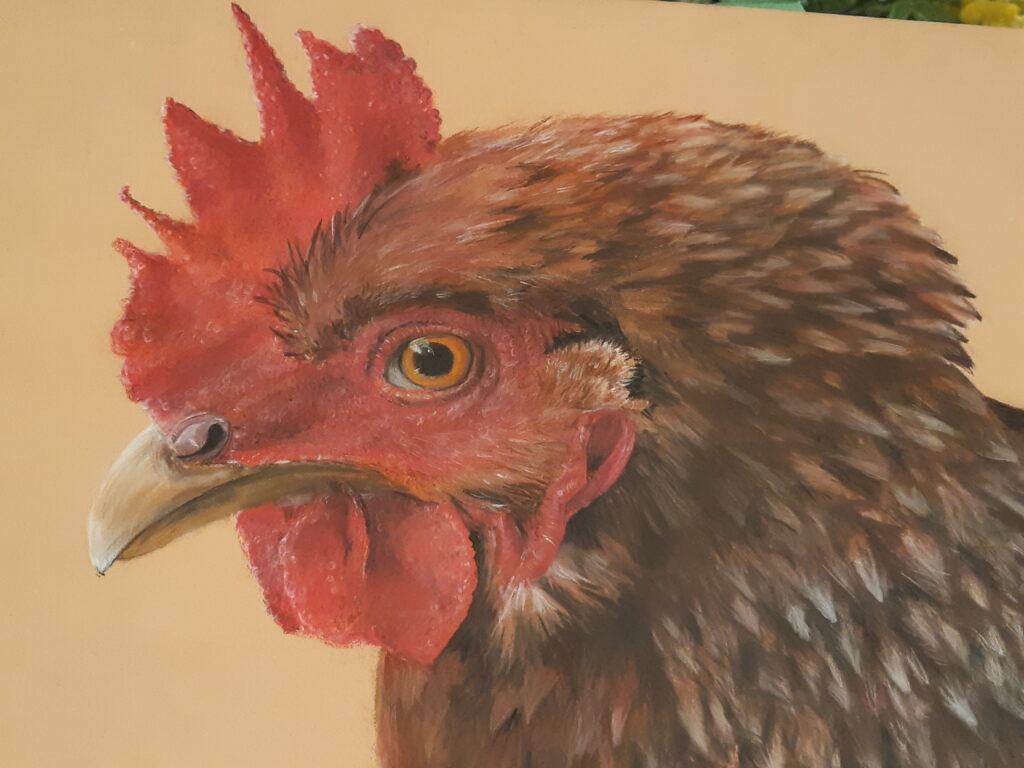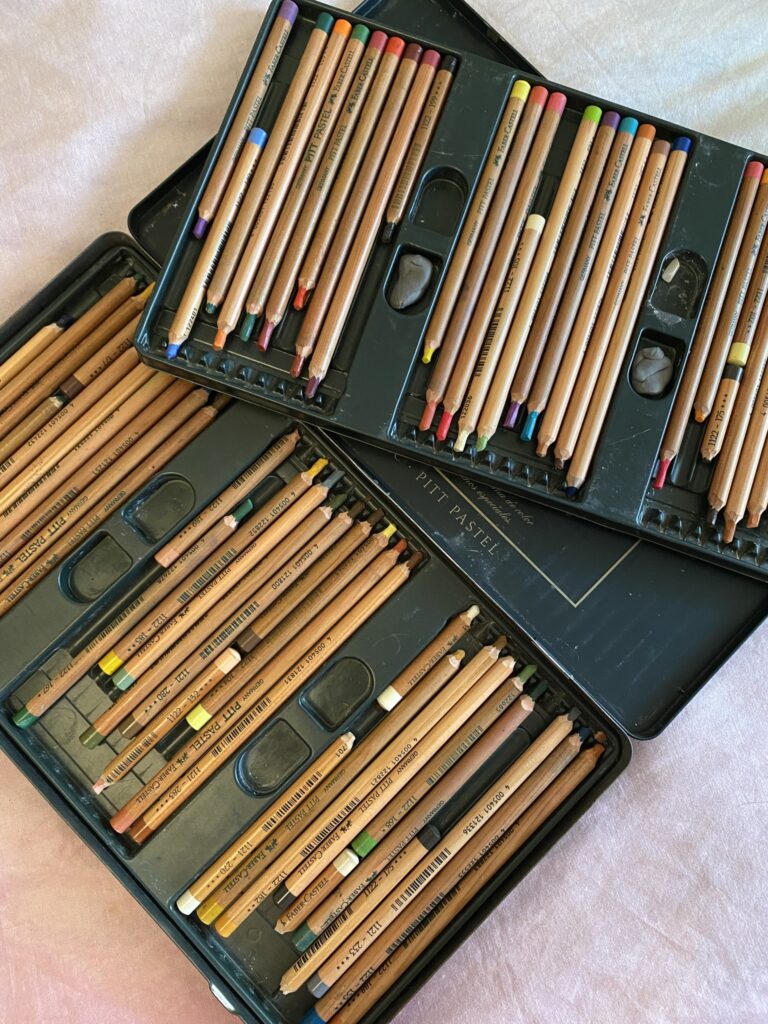Why did the soft pastel go to therapy? Because it had too many issues with commitment – always breaking up into smaller pieces!
And the Pitt pastel pencil? Well, it’s the responsible one in the family, always staying inside its wooden case and never drawing outside the lines. It’s practically a model citizen in the art world!
Soft pastels and Pitt pastel pencils are both types of pastel mediums used in art, but they have some key differences in terms of their form, application, and characteristics.

Soft Pastels: Soft pastels come in the form of sticks or chalk-like pieces. They are made by mixing pigment with a minimal amount of binder, resulting in a powdery and fragile texture. Soft pastels are typically quite delicate and can easily break. We recommend Faber Castell soft pastels for their quality.

Pitt Pastel Pencils: Pitt pastel pencils, on the other hand, are coloured pastel leads encased in a wooden barrel, much like regular coloured pencils. They are a more precise and controlled version of pastels, designed for detailed work. We recommend Faber Castell pitt pastel pencils for their quality.
Application:
Soft Pastels: Soft pastels are applied by directly drawing or rubbing the pastel sticks onto the paper (we recommend Clairefontaine pastelmat) or other surfaces. They are known for their vibrant colours and the ability to blend and layer them to create smooth transitions and gradients. Soft pastels are often used for broad strokes, large areas, and expressive, loose techniques. They are excellent for backgrounds.
Pitt pastel pencils: These are used in much the same way as a coloured pencil and it is easy to layer the pastels on the paper surface to build up the pastel to a fine dust. They allow for finer edges and details in your artwork. This is particularly useful when depicting fur and feathers in wildlife art.
Fixatives:
Soft Pastels: Soft pastels require fixative sprays to prevent smudging and to fix the pigment to the paper. Without a fixative, soft pastel works can be easily smudged or damaged.
Pitt Pastel Pencils: Since pastel pencils are more controlled and less prone to smudging, they do not require fixative as soft pastels especially when using the Clairefontaine pastelmat.
Durability:
Soft Pastels: Soft pastels can be quite delicate and are susceptible to breakage, making them somewhat less durable, especially for travel or outdoor use.
Pitt Pastel Pencils: Pastel pencils are more robust due to their wooden casing and can withstand handling and transportation better than soft pastels. The Faber-Castell pitt pastel pencils rarely break inside wooden casing as they are glued all along the shaft. Other brands are spot glued leaving them susceptible to breaking.
Soft Pastels: Soft pastels are easy to blend with your fingers, blending stumps, or other tools. They can be smudged to create smooth transitions between colours.
Pitt Pastel Pencils: Pitt pastel pencils are best blended with your finger. They also can be smoothed to create smooth colour transmissions but their more precise nature makes them excellent for intricate details rather than extensive blending.

Pitt Pastel Pencils: Pitt pastel pencils are used for more controlled and detailed work. They are sharpened (using a blade) to allow for precise lines and intricate details. They are particularly useful for fine art and portrait work where precision is essential.
Blending:
Remember, when you’re feeling indecisive about which pastel medium to use, just ask yourself: Are you in a committed relationship with art, or are you more of a “draw the line when you see it” kind of artist? 😄
In summary, soft pastels are best for creating expressive, broad strokes and large areas with vibrant colours, while Pitt pastel pencils are more suited for detailed work, precision, and controlled drawing. The choice between the two depends on the artist’s style and the specific requirements of their artwork. Some artists even combine the two mediums in a single piece to take advantage of their respective strengths.

